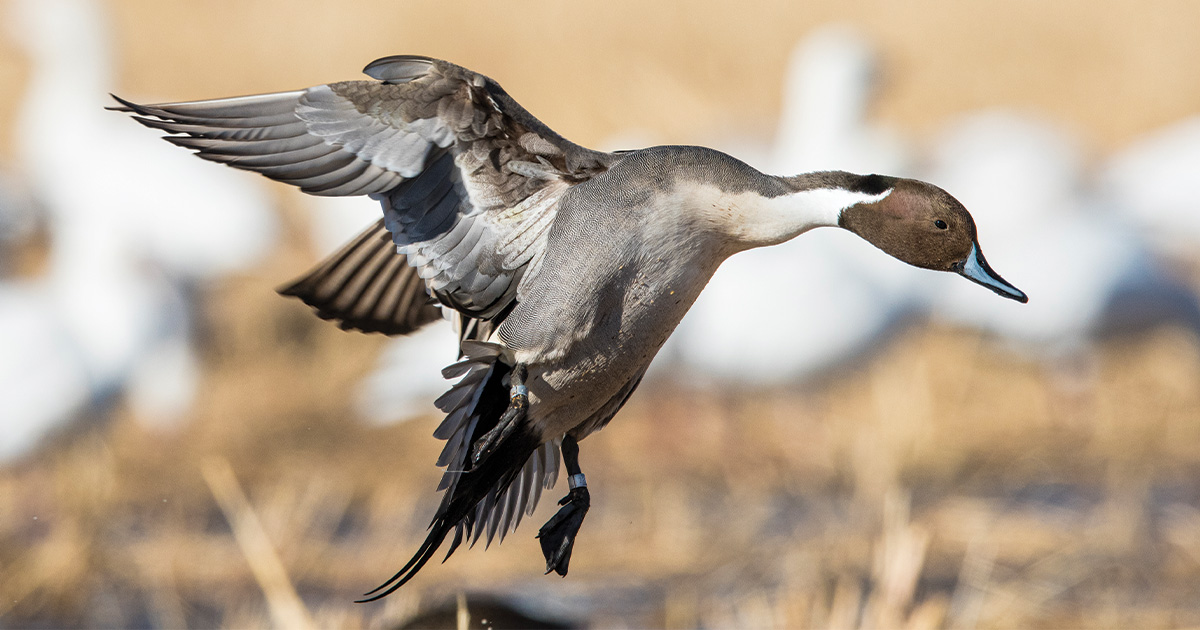Migration Alert: Washington and Idaho Hunters Off to a Good Start
Oct. 21, 2025 – Pacific Flyway – Washington and Idaho
Oct. 21, 2025 – Pacific Flyway – Washington and Idaho

An early, sharp drop in temperatures, coupled with a mix of snow, wind, and rain across prairie Canada, drove a pulse of waterfowl south of the border. Many early-season hunters in Washington and northern Idaho took advantage of the opportunities. But as the migration vanguard passed south toward California, the weather cleared and opening weekend of duck season became another nice memory, whetting the appetites of those waiting for a repeat.
Hunters in both states report good success for locally produced ducks and, interestingly, an unexpected early influx of wigeon on both sides of the Cascade Mountains in Washington.
There was no single hotspot for opening weekend hunters across the Puget Sound, reports Matthew Wilson, statewide waterfowl specialist for the Washington Department of Fish and Wildlife (WDFW), although those concentrating on the Skagit Flats and the north sound did the best overall.
Steven Sandborn of Marysville, says he rarely has to visit a state-managed area, although there are several in the north sound with standing water.
Instead, he hunts the tide, which rewarded him with a limit of mallards following the push of water into the flooded salt marsh.
“Any stable craft that floats can get you there and timing is the key,” he says. “Scout for access, then focus on stealth and a good blind.”
Kyle Spragens, WDFW waterfowl section manager, agrees, noting that ducks pay more attention to tidal access than the time of day to feed.
High tides across the sound are favorable for early daylight hunts this weekend.
Snow geese and cackling geese are filtering into the Skagit Valley and while nothing is known about nesting success on Russia's Wrangel Island, hunters are encouraged by the apparent increase in young juveniles among the snows seen on Fir Island.
Moving south, Spragenss reports successful banding of local ducks in the Snohomish River Valley south to Everett, resulting in “decent numbers of band recoveries on opening weekend.”
The lower Columbia River produced higher-than-usual numbers of wigeon and hunters are looking forward to November's usual glut of both dabblers and divers from the Lewis and Clark Refuge to Rice Island and Deep River.
Willapa and Grays Harbor on the coast also yielded good results, Spragens says.
East of the Cascades, Canada's early weather brought good news for hunters from the Prairie Potholes to McNary, on the Columbia.
Results, says Wilson, were “better than I expected, with a real mixed bag of mallards, wigeon, and teal. “There was a pretty good number of birds that showed up just before the opening.”
Moses Lake and the Scablands are attracting decent numbers of ducks and others are beginning to raft along the Columbia from the Hanford Reach south.
Robert Akins, manager of McArthur Lake and Boundary, Smith Creek Wildlife Management Areas for the Idaho Department of Fish and Game (IDFG), notes a “pretty good opening day” in the northern Idaho Panhandle on Oct. 11 after the shot of cold weather in the north brought new ducks into his area.
“Hunters got into a few pintails and wood ducks, along with mallards, gadwall and wigeon,” Akins reports. “It's been pretty normal for the opening week, then the birds leave, and hunters wait for more from the north.”
Much the same held true on state-managed lands in the upper Snake River.
Unlike Washington's statewide opening, Idaho staggers its opening of duck season, with the panhandle and southeast Idaho opening Oct. 11, while those in the populated south and southwest waited until Sunday, Oct. 19.
Wayne Crownover of Nampa, a Mossy Oak Pro Staff member, says it was worth the wait.
“A couple of buddies did good, with limits on ducks and even a few geese,” he notes. “One hunted on Lake Lowell (a public reservoir) and the other was hunting a field.”
Many local hunters in the fertile Magic Valley find their best hunting in agricultural fields, where ducks come to feed after roosting on the Snake River and other nearby waters.
“We've got some big weather patterns coming in,” Crownover predicts, “and that will help. We're waiting on a few good weather systems in November.”
Stay up to date with the latest migration information.
Ducks Unlimited uses cookies to enhance your browsing experience, optimize site functionality, analyze traffic, and deliver personalized advertising through third parties. By continuing to use this site, you agree to our use of cookies. View Privacy Policy